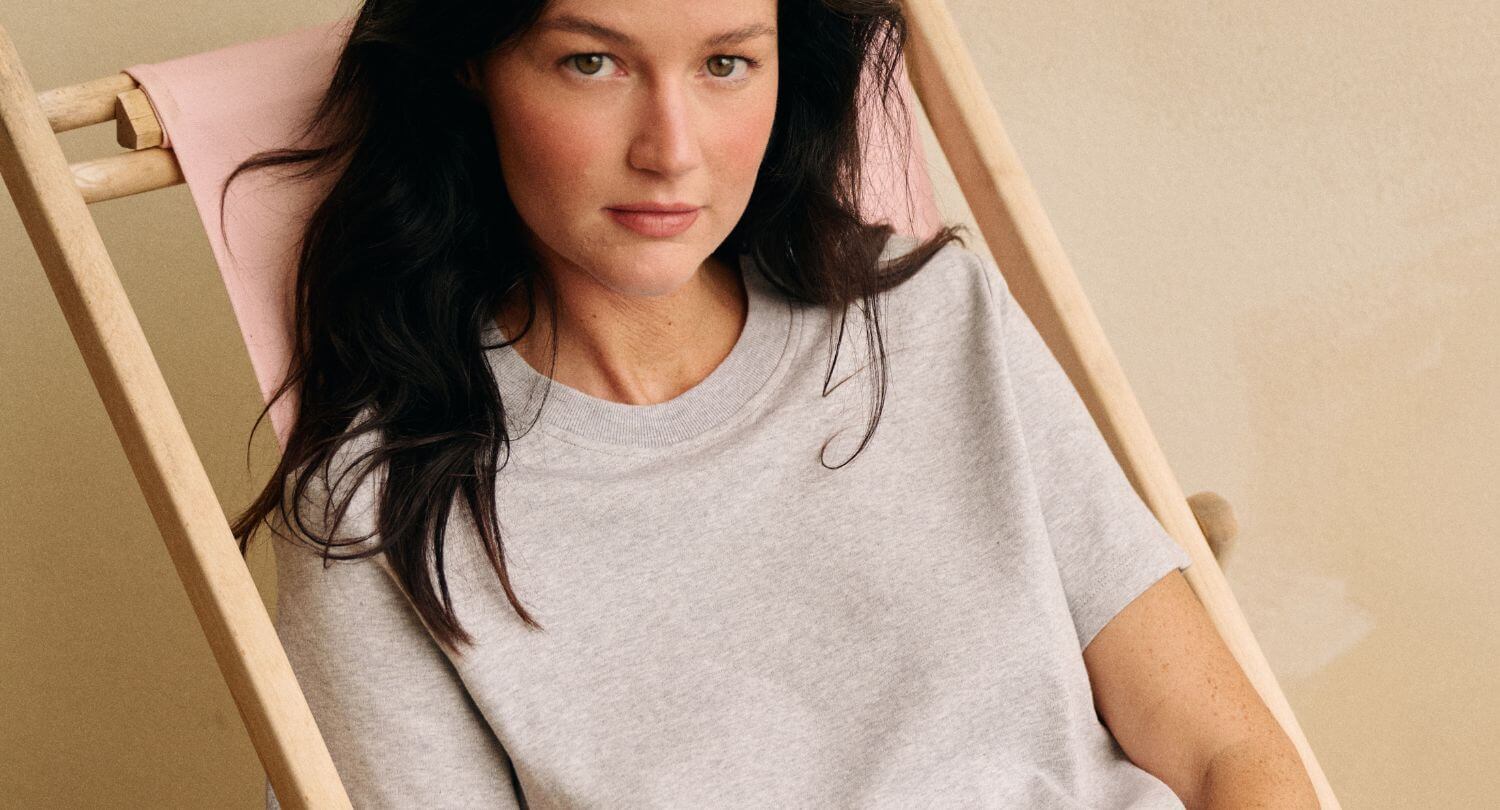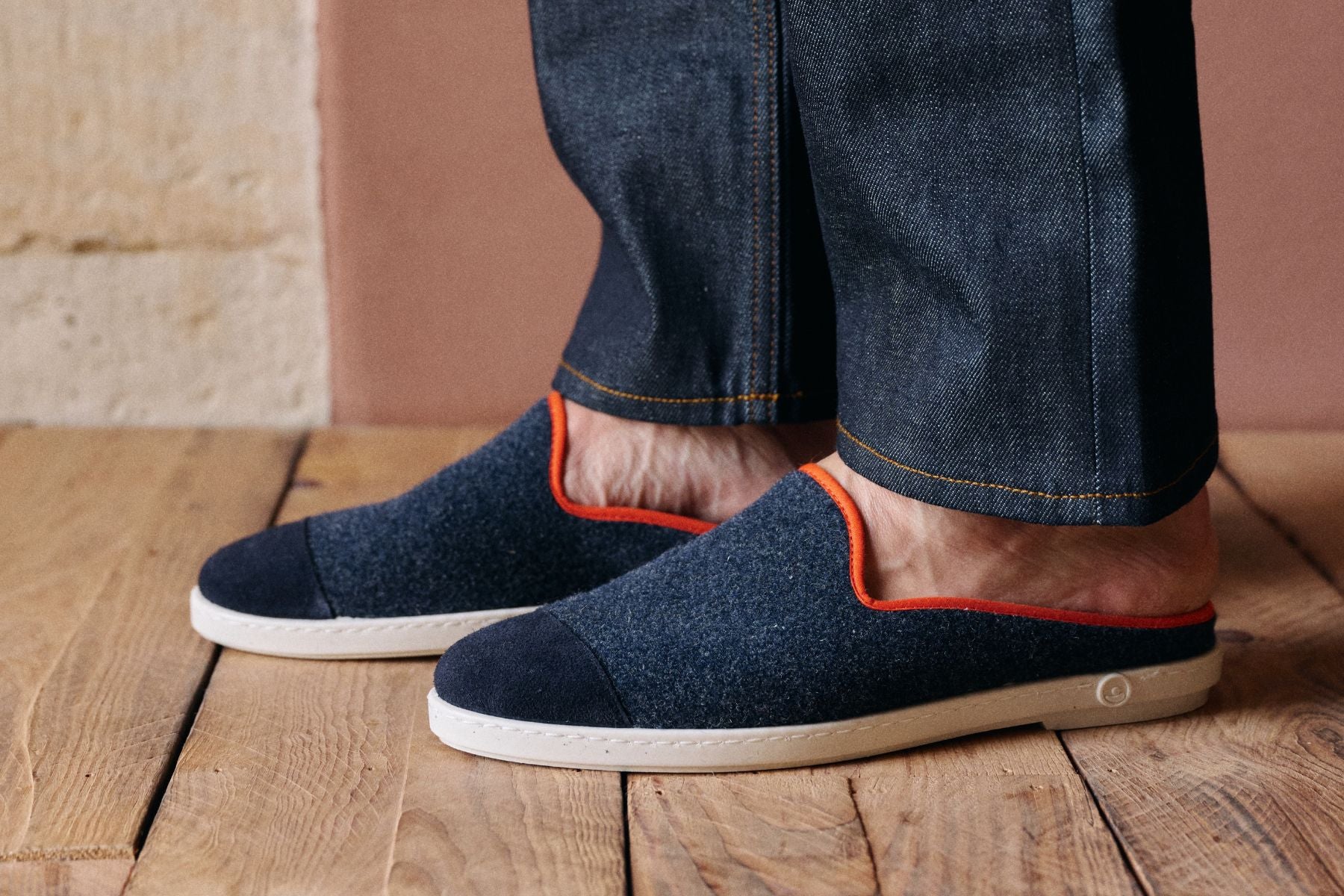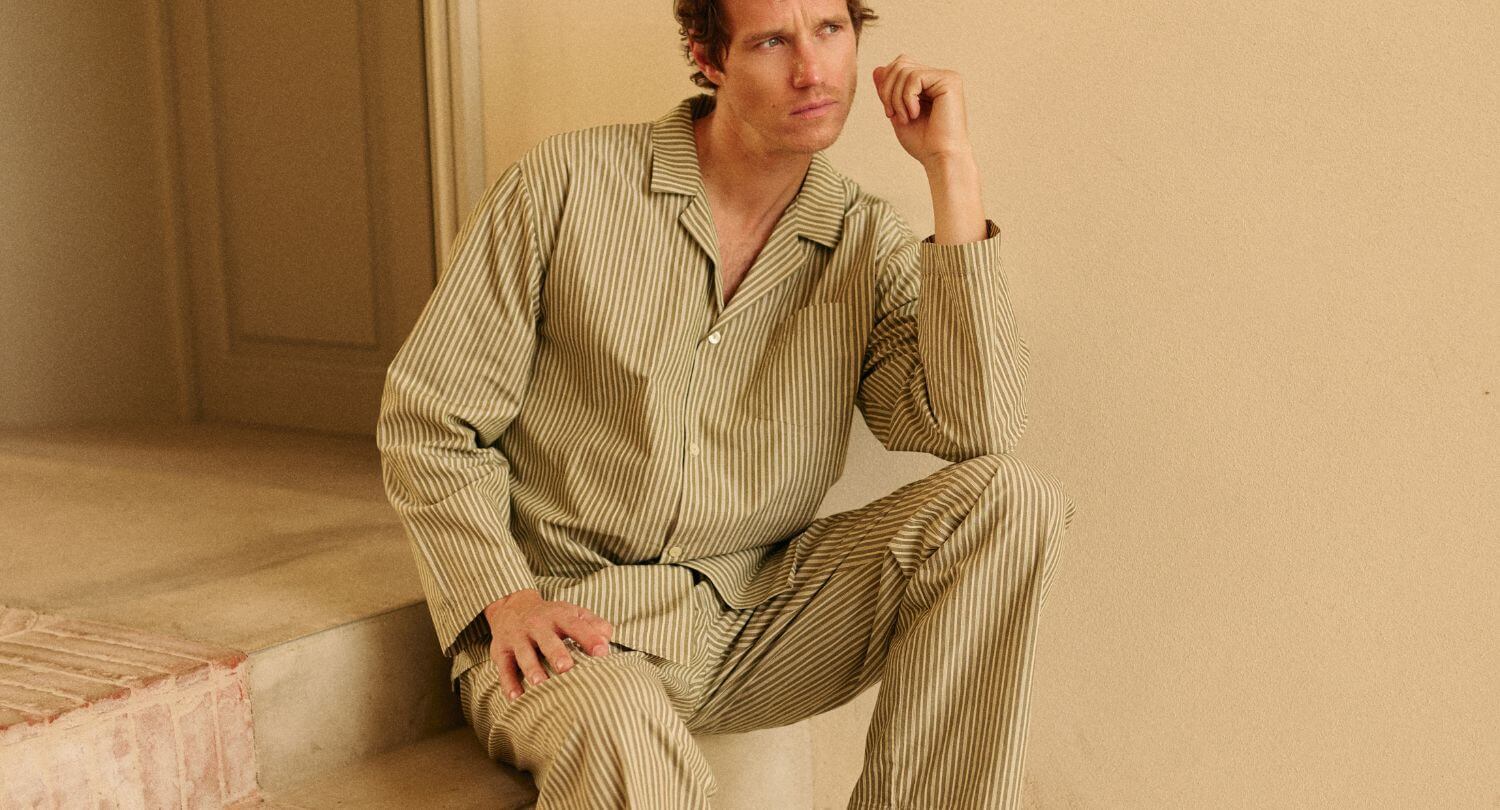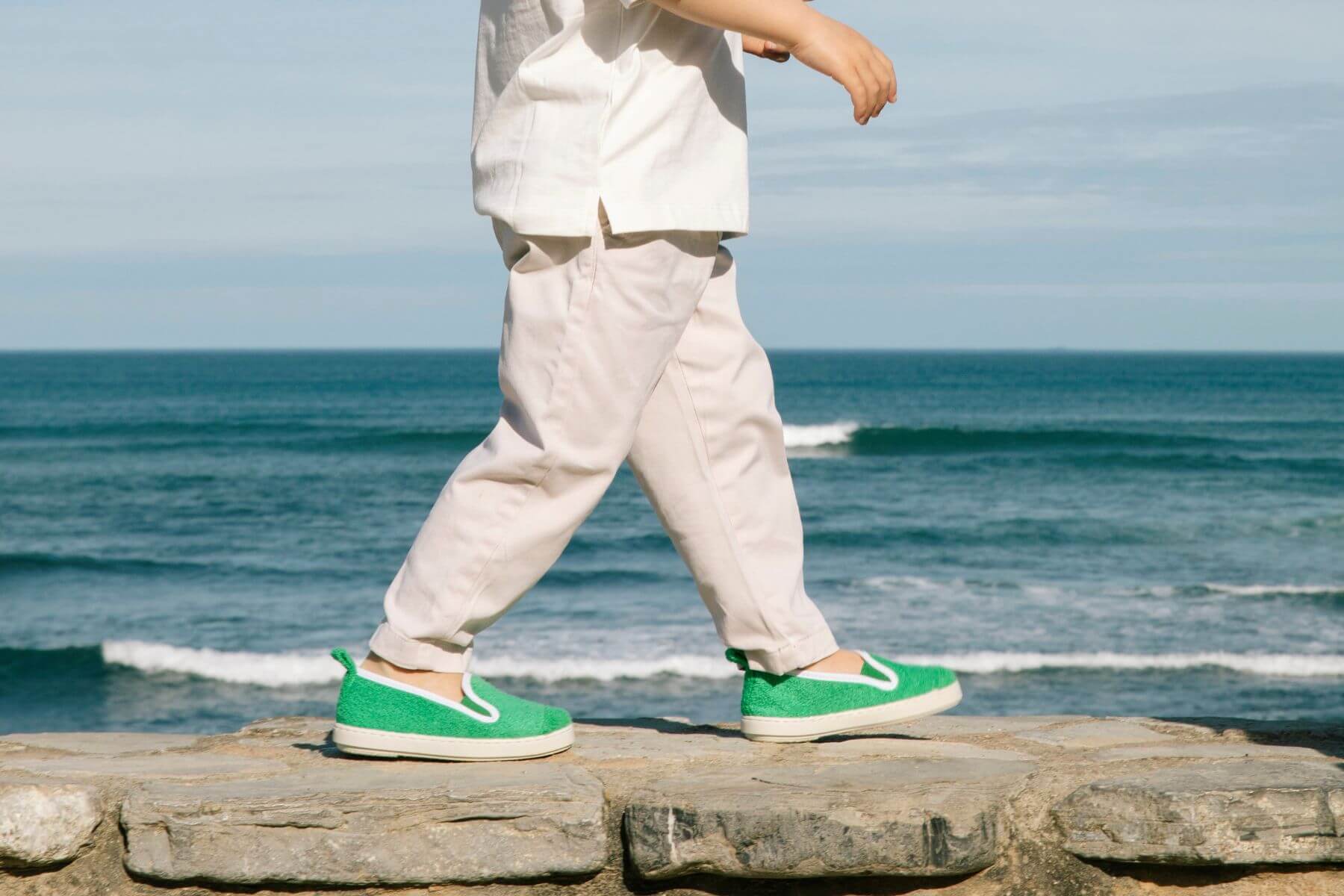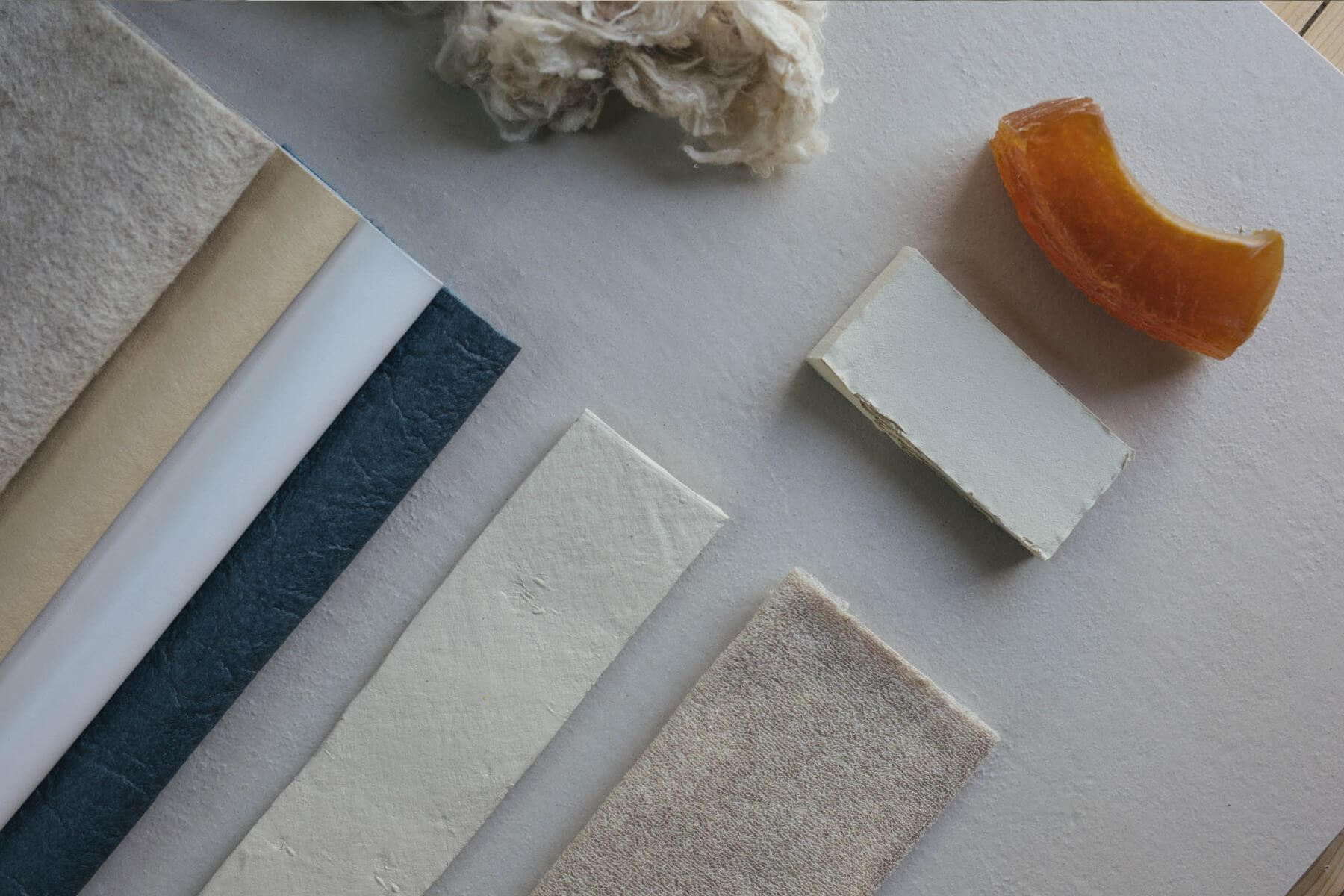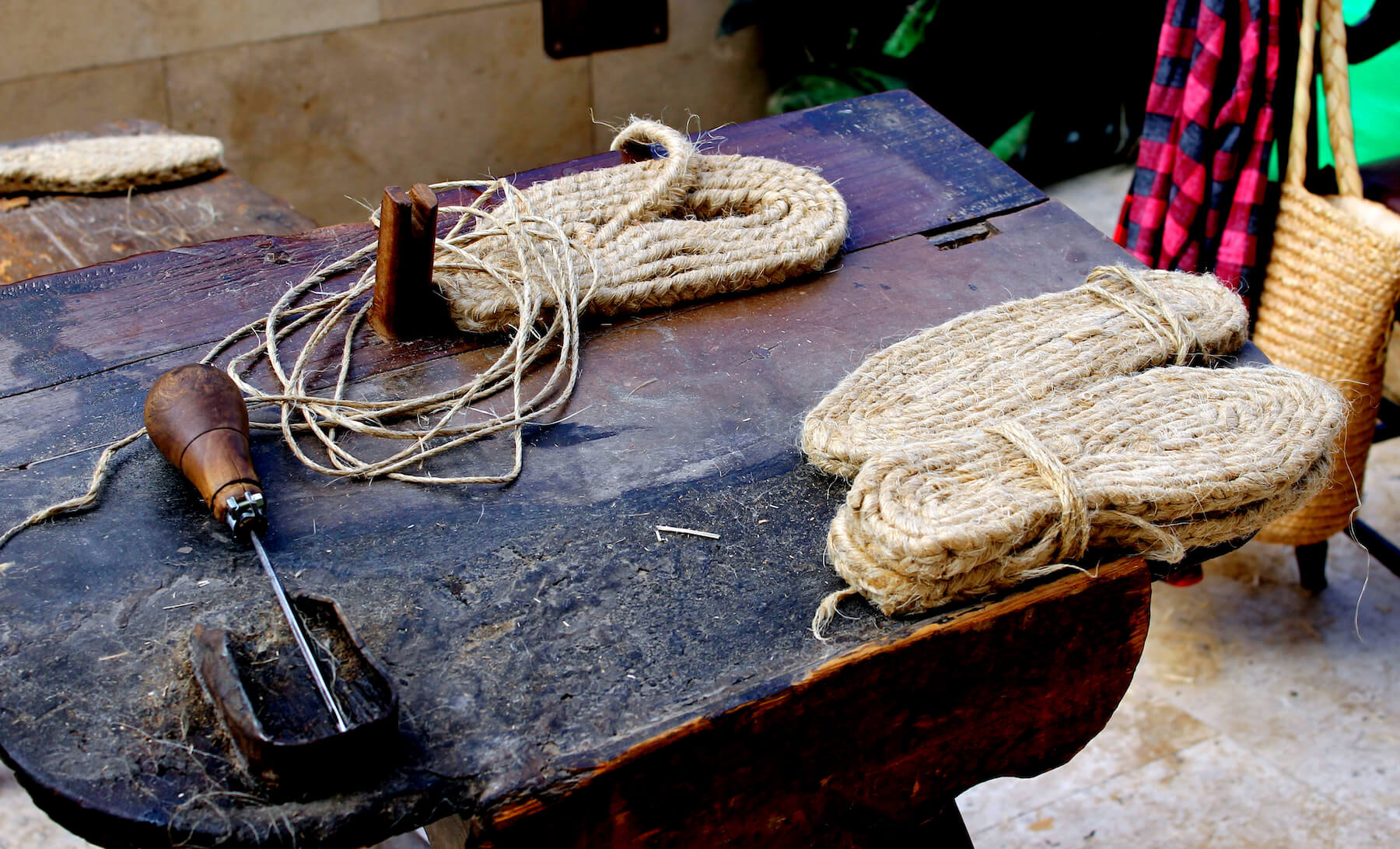The espadrille dates back more than 4000 years
The very first appearance of this typical shoe dates back a few thousand years, discovered during archaeological exploration in a cave in Spain near the town of Valtorta. We found leather models with a woven rope sole having the same characteristics as today's espadrilles. It is believed that they were worn by local peasants as they certainly needed durable shoes for their difficult working conditions.

The ancestor of the espadrille
And no, the flat-soled espadrille does not come from Mauléon in the Basque country!
At the time of the King of Aragon in Spain, the king's infantrymen wore this type of sandals called "alpargatas" considered to be the ancestor of the modern espadrille. These sandals were designed with a cotton canvas upper and a woven jute rope sole. Hand-sewn, these shoes were made from natural, inexpensive materials.
Namely, each region of Spain was recognizable using the color of the espadrilles produced. In Catalonia, we found the red espadrille with ribbons, while in the Valencia region, the espadrilles were made of beige canvas, and decorated with multiple ribbons.
The democratization of the espadrille
Exported to Europe during the Hundred Years' War in the 14th century, despite their increasingly growing popularity, it was not until the 18th century that the manufacture of this shoe began in France. It was in the French Basque Country that these shoes began to be designed: workers emigrated to the commune of Mauléon to launch the production of the first pairs of French espadrilles for men and women. This is why Mauléon is nicknamed “the capital of espadrille”. The manufacturing of Basque espadrilles was special. The soles were made of braided rope by the hemp weavers while the seamstresses conceptualized the canvas in linen or cotton, playing with colors and patterns. As the demand for espadrilles was increasingly strong, particularly in the mines of northern France and South America, the family workshop had to resort to Spanish workers: they came in the fall and left in the spring; they were nicknamed “the swallows”.
At the beginning of the 21st century, it was the village of St-Laurent-de-Cerdans in French Catalonia, one of the largest centers for manufacturing French espadrilles, which became the stronghold of high Catalan lace-up espadrilles for women, called “vigatanes”.

Espadrilles, originally sold only on traditional markets, spread throughout France leading to its industrialization with henceforth the use of machines or assembly line work for their manufacture.
From then on, the espadrille was adopted by farmers and artisans for their durability, comfort, and affordability, but also by aristocrats looking for comfort and constant freshness on their feet during the summer. This democratization led to a diversification of the materials used, made possible by colonies exporting the required raw materials. The soles could then be made from jute and rubber.
Indeed after the First World War, the soles of espadrilles underwent a change in their manufacturing, and were now made of rubber, which allowed their springboard into the world of fashion. During the 20th century, espadrilles were very popular, found on the feet of many vacationers, especially during the summer, considered the perfect sandals for the beach. Over the years, espadrilles became fashionable, and were adopted by French men from the hippie movements of the 60s. We have seen a recent phenomenon in recent years: the city espadrille .

The espadrille has become a luxury accessory
In the 1960s, given the dazzling democratization in the world of espadrilles from the Basque country, the great couturiers decided to reinvent them. The famous Yves Saint Laurent was the first to take hold of this traditional sandal, and transformed it by adding a heel and a ribbon tied around the ankle. He is very popular with women with his espadrilles, which are now more feminine and sophisticated. The espadrille then became a high-end fashion element taken up by all the major haute couture houses, and many French workshops began manufacturing espadrilles. This is the time when the first espadrilles brands, such as Castaner, emerge.
Today, the espadrille is available in all possible ways, there are flat soles, heels, wedges, for men, women and children , plain or patterned, with or without laces. The majority of French artisanal espadrilles remain manufactured in Mauléon even if Chinese industrial competition, of low quality and very aggressive prices, has appeared.
At Angarde, we wanted to revisit the traditional espadrille to make it more comfortable, more durable and more stylish. We therefore reworked the sole of the espadrilles so that it is waterproof, flexible for walking and resistant like that of a sneaker. For the rest, we stayed in the DNA of the French espadrille, namely an upper (upper part) in recycled cotton (or linen), and Spanish production. In short, an elegant and durable espadrille, easy to wear and machine washable. We also have an article that explains how to wash your sneakers.
The espadrille has evolved over the years from a popular shoe to a fashion-forward shoe. This traditional shoe has stood out for its comfort and usefulness in summer, but also for its timeless look and design. Flat, wedged or with a heel, with embroidery, ribbon or without, there is something for all tastes, in a bohemian, casual chic or dressy style: everyone will find a stylish way to dress their feet in summer because the espadrille fits all occasions.
You now know the origin and history of this famous summer shoe ;-)






